Writing stories with lots of detail doesn’t come naturally to all of our students.
But think about it – when a child tells us about her trip to the zoo, it sounds like this:
“My mom and dad and brother and I went to the zoo on Saturday! We saw the lions and the bears – and oh the baby bears were SO cute – and we had lunch at the cafeteria, and it was really yummy.”
and not usually like this:
“My family and I went to the zoo on Saturday. When we waited in line for our tickets, I was so excited. I couldn’t wait to see all the animals! Finally, it was our turn, and we got our tickets. We also got a map. My brother really wanted to see the gorillas first, so we headed to the monkeys and apes exhibit. It was so cool to see them swinging around and playing!…”
So really, it’s not surprising that it’s difficult to get students to write stories with lots of detail. The way we want them to tell stories through writing is quite different from the way they tell stories orally.
Teaching students to orally tell stories with more detail is a good first step in the right direction. We can follow that instruction up with different, specific lessons that teach students multiple strategies for writing stories with details.
In today’s post, I’ll suggest 10 different lessons that can be used to get primary students drawing and writing with more detail – they’re great for any fiction unit, whether your students are writing personal narratives, realistic fiction, fairy tales, or fantasy. And three of the lesson ideas have videos and free plans to go along with them!
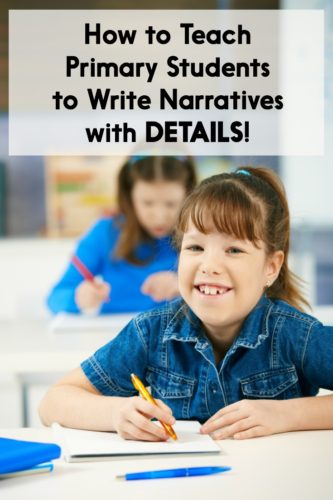
Photo Credit: StockLite, Shutterstock
Note: This post contains Amazon affiliate links.
Lesson Idea 1: Draw characters in detail
Many of my Kindergarteners come to me drawing very basic people – some don’t even have a body! Toward the beginning of personal narratives or other fiction writing units, I like to teach my students to draw their characters in detail. A great way to do this is to have the kids draw you or a friend. Help them notice features like ears, eyebrows, a neck, feet, etc. Then, ask them to take what they’ve learned and add more details to the pictures in the books they’re working on. Having kids draw with pencils or colored pencils will set them up for success, because crayons can be a little too bulky for drawing many details.
Lesson Idea 2: Draw the setting in detail
My students often draw characters in isolation – with no backgrounds. Show students illustrated picture books and point out how the author drew a background in addition to the characters. Then, model how you draw yourself in your classroom, and have kids look around the room to suggest details you can add to your background. Finally, have your kids choose a finished story and add backgrounds to all of their pictures.
Lesson Idea 3: Tell how characters feel
When I teach students to tell how they or other characters in their stories feel, I always have kids brainstorm a list of emotions words first. Otherwise I just end up reading the words “happy” and “sad” over and over!
You can also teach students to include details about how character feelings change throughout a story (mentor texts are helpful for showing examples of this). Kids can explain how they or their characters felt at the beginning, middle, and end of the story.
Lesson Idea 4: Tell what characters do, step by step
Kids tend to be brief when they tell what characters do. They might write, “Suzy played with her sister” rather than “Suzy and her sister ran outside. Suzy grabbed a ball and threw it to her sister. They played catch until it was time for dinner.”
We can teach kids to stretch out their stories by telling what characters do, step-by-step. In this video, I demonstrate how you might use a mentor text to show students how an author describes, step-by-step, what a character does.
To get a free lesson plan on teaching students to tell what characters do step-by-step (and 7 other free lesson plans on teaching students to write with detail), put your information into the boxes below!
Success! Now check your email to download the freebie.
Lesson Idea 5: Tell what characters say
Although the Common Core Standards don’t require students to include dialogue in their writing until 3rd grade, our little ones are definitely capable of doing this earlier! My Kindergarteners love learning how to use speech bubbles – the Elephant and Piggy books from Mo Willems serve as great mentor texts for this skill.
It’s also not necessary that students use quotation marks and commas correctly when including dialogue. Getting them to include what characters say is a good first step – the grammar learning can come later.
Lesson Idea 6: Tell what characters are thinking
Having students include character thoughts is another great way to get them to add detail. You can begin this type of lesson by showing students how a published author tells what a character is thinking. Check out this video to see how I might introduce this topic with a mentor text:
A lesson plan to go along with this video is included in your free download (see above to sign up)!
Lesson Idea 7: Use vivid verbs
You probably know the drill…kids need to learn to replace “ran” with “sprinted” or “dashed.” It’s fun to create an anchor chart of student-generated verbs and then have students add to it as they encounter strong verbs in their reading!
Lesson Idea 8: Describe the characters
Once students are able to draw characters with detail, they can eventually use words to describe their characters. A description of an interesting character is a great way to begin a story! I love how Doreen Cronin describes the main character of Bloom:
This lesson plan is also included in your free download!
Lesson Idea 9: Describe the setting
Similarly, students can learn to use words to describe the setting of the story. You can get them started by having them create a five-senses web. What would they see, hear, smell, taste, and/or touch if they were actually in that setting? Writers can create more realistic experiences for their readers by describing the setting.
Lesson Idea 10: Show, don’t tell, how characters feel
More advanced primary writers can learn to show, rather than tell, how their characters are feeling.
Here’s an example of telling how a character feels: Timothy was sad.
And here’s an example of showing how a character feels: Timothy crossed his arms. He looked down at the ground. He bit his lip, fighting back tears.
Mentor texts are great places to find this type of description! It takes time and practice for students to master this skill, but modeling this skill repeatedly can help move them towards this goal.
Conclusions
If you’d like access to a FREE narrative writing resource that gives you 10 lesson plans and activities for each grade (Kindergarten, 1st grade, and 2nd grade), click here for access to that: Narrative Writing Lessons for K-2


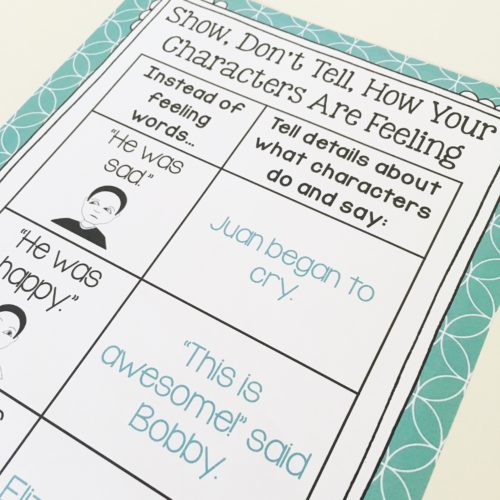
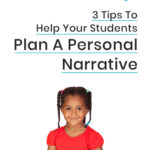

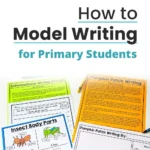
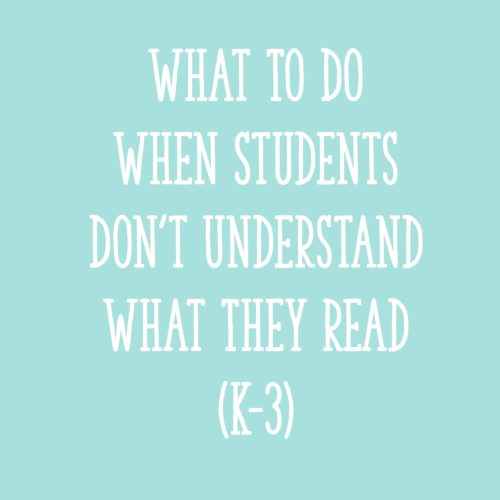








Hi Alison,
I love your ideas for writing narratives! You simplified the writing processes in a way that my students will be able to complete. Keep the great ideas coming! ????
I’m so glad it’s helpful, Lindsay!! 🙂 Thanks for reading and commenting!
Alison
Thank you I am a beginning teacher and I really needed help to improve my students writing. I have read all three of your writing lesson and I am anxious to apply when school begins again. Thank you so much.
You’re so welcome!! Good luck with your little writers this year!
Alison